STPAR - Street Parade
For sure, the love mobiles will roll again on this summer's street parade. Each year, the organisers decide on a fixed order for the decorated trucks. Experience taught them to keep free a side street to be able to bring the trucks into order.
The side street is so narrow that no two cars can pass each other. Thus, the love mobile that enters the side street last must necessarily leave the side street first. Because the trucks and the ravers move up closely, a truck cannot drive back and re-enter the side street or the approach street.
You are given the order in which the love mobiles arrive. Write a program that decides if the love mobiles can be brought into the order that the organisers want them to be.
Input
There are several test cases. The first line of each test case contains a single number n, the number of love mobiles. The second line contains the numbers 1 to n in an arbitrary order. All the numbers are separated by single spaces. These numbers indicate the order in which the trucks arrive in the approach street. No more than 1000 love mobiles participate in the street parade. Input ends with number 0.
Output
For each test case your program has to output a line containing a single word "yes" if the love mobiles can be re-ordered with the help of the side street, and a single word "no" in the opposite case.
Example
Sample input: 5 5 1 2 4 3 0 Sample output: yes
Illustration
The sample input reflects the following situation:
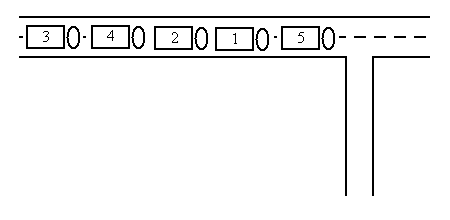
The five trucks can be re-ordered in the following way:
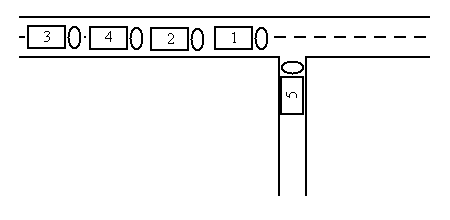
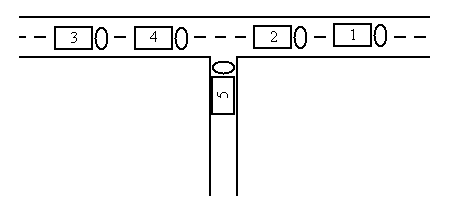
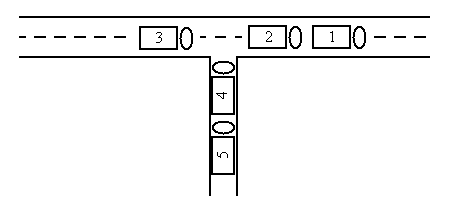
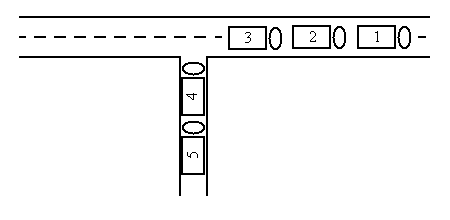
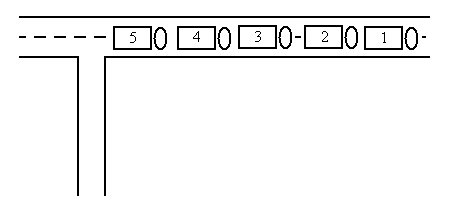
hide comments
|
|
rishikesh20:
2019-03-18 18:32:57
@iamthedanger I have tried all the test cases provided by you but still I gets WA. |
|
|
iamthedanger:
2019-03-13 10:54:18
Thanks @zhadyrassyn for your kind words. |
|
|
zhadyrassyn:
2019-03-13 09:54:26
@iamthedanger Thank you. I was struggling for some days. And today your comment made my day! Last edit: 2019-03-13 09:54:55 |
|
|
iamthedanger:
2019-03-13 08:47:08
this contains some additional testcases try using them:https://www.quora.com/How-can-I-solve-a-STPAR-problem-on-SPOJ-when-my-code-is-giving-the-right-answers-for-the-test-cases-which-were-discussed-in-the-form-but-it-is-still-giving-me-WA Last edit: 2019-03-13 08:47:47 |
|
|
green_pepper:
2019-03-06 23:39:07
What's with the input/output? I can't figure this out??? All test cases in comments return correct answers?? I've tried writing the answer after each input, after all inputs, but I still get wrong answer... Any suggestions what I'm doing wrong?? |
|
|
knir0103:
2019-03-04 17:30:31
notice strictly that "a truck cannot drive back and re-enter the side street or the approach street.", u will get AC easier |
|
|
vashist99:
2019-03-01 08:38:35
what would the output be for
|
|
|
zakir068:
2019-02-26 07:34:29
the required order is in this problem is 1 2 3 4 ... n .
|
|
|
kislaykishore:
2019-01-31 05:04:33
@sdfg04 you can instead consider that there are 1 to n+1 trucks in the input with the n+1 truck bearing a large number > 1000. Then your existing logic should take care of emptying the stack. |
|
|
sdfg04:
2019-01-05 21:37:23
Do not forget to empty the stack , in case someone is not defining seperate functions for such problem.
|
| Added by: | Patryk Pomykalski |
| Date: | 2004-07-01 |
| Time limit: | 1s-2s |
| Source limit: | 50000B |
| Memory limit: | 1536MB |
| Cluster: | Cube (Intel G860) |
| Languages: | All except: NODEJS PERL6 VB.NET |
| Resource: | Swiss Olympiad in Informatics 2004 |

 RSS
RSS